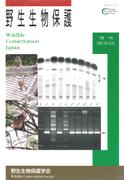Volume 7, Issue 1
Displaying 1-4 of 4 articles from this issue
- |<
- <
- 1
- >
- >|
Original Papers
-
Article type: Original Papers
2001 Volume 7 Issue 1 Pages 1-24
Published: December 25, 2001
Released on J-STAGE: October 17, 2017
Download PDF (1858K) -
Article type: Original Papers
2001 Volume 7 Issue 1 Pages 25-40
Published: December 25, 2001
Released on J-STAGE: October 17, 2017
Download PDF (1615K) -
Article type: Original Papers
2001 Volume 7 Issue 1 Pages 41-47
Published: December 25, 2001
Released on J-STAGE: October 17, 2017
Download PDF (639K) -
Article type: Original Papers
2001 Volume 7 Issue 1 Pages 49-62
Published: December 25, 2001
Released on J-STAGE: October 17, 2017
Download PDF (1224K)
- |<
- <
- 1
- >
- >|
